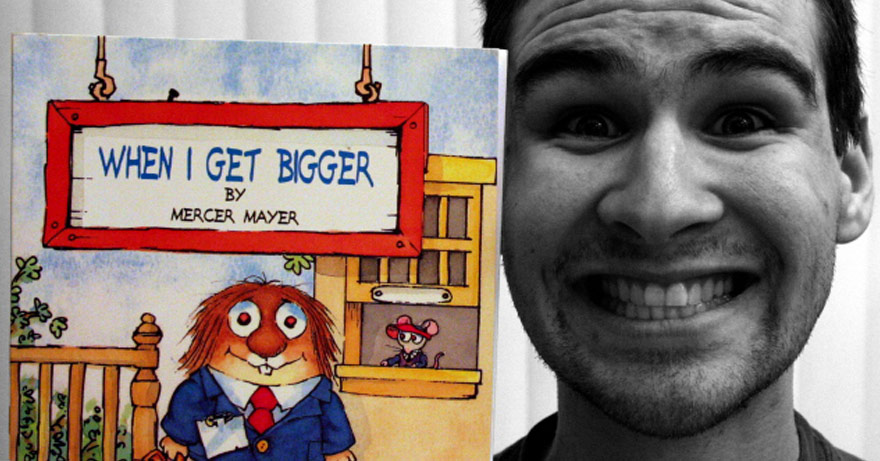If you’re a young brand looking to grow, but don’t have the capital to pay big bucks to get your product out there, word of mouth marketing in today’s terms might just be the right thing for you. What am I talking about? A blogger outreach campaign.
According to Nielsen Media, there are somewhere over 181 million blogs on the Internet with 6.7 million people publishing content on blog sites. That’s a whole lot of blogging going on, and a whole lot of opportunity to create some buzz. Using a blogger outreach campaign as a part of your marketing strategy can be beneficial to create brand awareness and exposure to relevant, targeted consumers.
Why does a message coming from a blogger sometimes have better reach than your marketing message? Trust. 81% of U.S. online consumers trust information and advice from blogs, and 61% of online consumers have made a purchase based on a blog’s recommendations (Source: BlogHer). One of the ways that you can utilize this influence is by getting your product in the hands of these bloggers to conduct a product review and post content around their experience with the product. Here a few recommended steps for a successful approach:
Establish your goals: First things first with any marketing initiative it’s important to understand what the goals are for your outreach campaign. Do you want to increase foot traffic to your website, gain a following on social media, build brand awareness, introduce a new product, etc? Understanding this upfront will give you something to benchmark and determine if your strategy was a success.
Find the influencers: Next, establish your criteria for qualified bloggers. You can use Technorati, Alltop or even Google’s blog search to help you locate them. Use tools like Pagerank and Alexa to determine what kind of traffic the identified blogger is getting. This will help you save time in the long run. Why waste energy pitching to someone who isn’t relevant or the end result won’t get your reach.
Establish rapport: You don’t ask someone out on a date before you get to know them. Establish rapport first before you approach. This means following them, engaging with them on social media platforms (Facebook, Twitter, Instagram, Google+), commenting on and promoting content that you like (honestly).
Outreach: After you’ve had some time to “get to know” them, you’re now ready to reach out. This is a big step though. Depending on how well known the blogger is they might receive thousands of emails just like yours. Your message needs to be genuine, personal to them, and creative. Something has to make them want to read it. If it sounds like a blanketed message, then chances are you’re just wasting your time. This part of the process does take time, but it’s worth it to put in the extra effort to connect with someone. That’s what will get you noticed. The key is not to be long-winded. Yes, what you’re sharing is great, fabulous and awesome I’m sure, but anything too long might get ignored. Be concise and to the point as far as what you’re asking for them to do.
Provide incentive: Be prepared to offer them something in return. What are you going to do for them that gives them a reason to even respond? Are you offering a complimentary product, are you willing to sponsor/fund a post? Sometimes bloggers (especially with greater reach) will only participate if you’re willing to provide a financial investment. It’s important to know upfront if that’s something you’re willing to consider. And if not, it’s good information to know and could be useful in the future.
Follow up: So you’ve sent your message. Next requires follow up, but make sure you’ve given the appropriate time to respond. Pay attention to automatic messages. If you get something stating, “Due to a high volume of emails,” you have to take into consideration that if might take them some time to even see your email. Wait a week. A lot of bloggers won’t engage until the follow up response. Planning your blogger outreach campaign well in advance will help allow for the turn around time it sometimes takes to get a response.
Support content creation: Once someone has agreed to participate, make it as easy for the blogger to develop his or her content. Provide them with information about the product. Is there a unique backstory about how it was created? If so, make sure to share, consumers care not only about the product, but a good brand story can help capture someone’s attention. Are there specific product features or benefits they need to know? The blogger may not know these intimate details so make sure you include. Many times bloggers will take their own photos of the product, but sometimes supplying additional imagery helps to support content. They may be featuring one product style, but if you want to show the breadth of a product line, that can be communicated through an additional photo.
Track your results: So your product has been featured, it’s time to track your results based on what you established as your goals. Monitor your website traffic, social media following and engagement. Make sure to thank the blogger for their efforts, you could be establishing an ongoing relationship with a blogger that may be interested in featuring your product more than once as you introduce new styles, limited edition collections, etc.
Be prepared for the negative: Something to keep in mind with this type of program though is you don’t have complete control in the process. You have to be prepared to hear the negative. There’s always a possibility your product won’t be a hit with everyone. It may mean the product isn’t right for them or it could be an opportunity for improvement based on some honest feedback.
Consider alternative outreach opportunities. Blogs are not the only platform brands have an opportunity to conduct outreach. Each social media platform (Google+, Twitter, Instagram) has influencers that create a potential for you to connect your brand with consumers. An interesting Instagram example was one carried out by shoe brand Puma. With a goal to increase their followers, the brand reached out to influential Instagrammers and sent to events (even some overseas) equipped with a camera to document “awesome places that shoes take you.”
Another unique example is how Audi utilized Twitter. After a raving Audi fan created a hashtag, #WantAnR8, around her desire to acquire an Audi R8, the brand made notice and gave her an Audi for the day to experience, document and share with her Twitter community. Audi promoted the event via twitter and encouraged others to do the same, resulting in a giveaway of eight more R8s. What’s interesting about that example is that the consumer created the opportunity, Audi was just smart enough to be listening.
The more unique the approach, the greater opportunity your outreach will standout in the crowd and gain a following. Start by considering what platform for outreach might be appropriate based on where your customers are spending their time online.
photo credit: Mylla
modified by Shout Out Studio





















